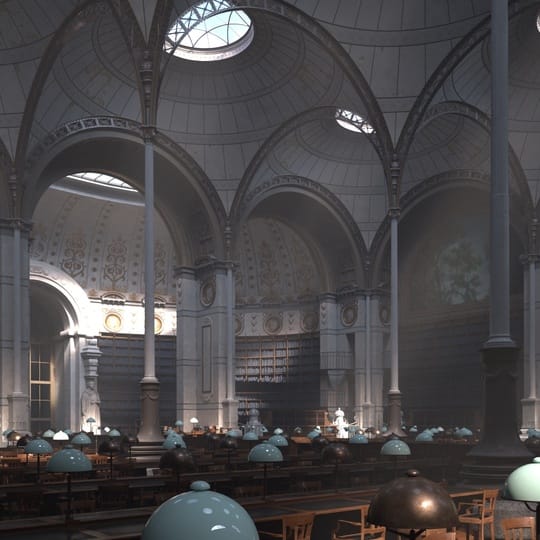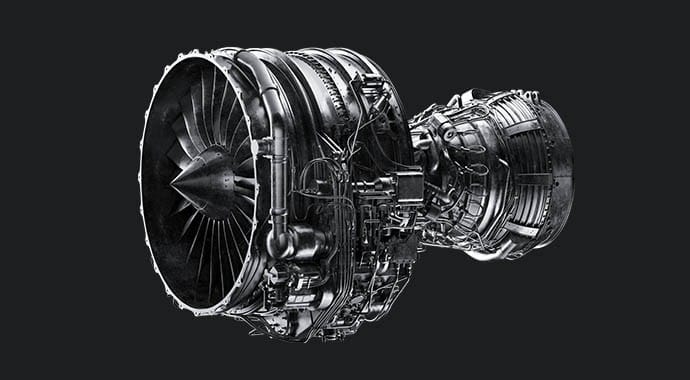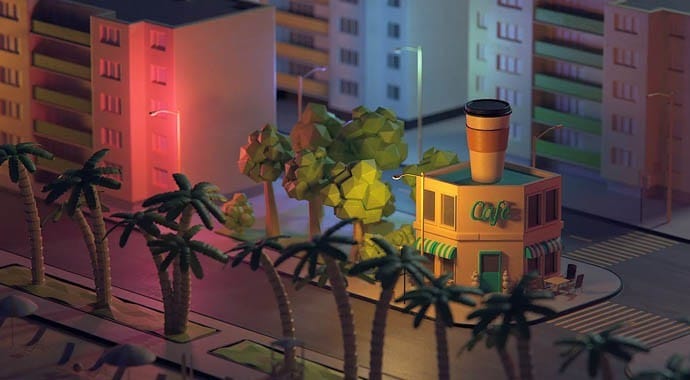V-Ray is getting smarter
Since the release of V-Ray 3.0, you may have noticed that many of the updates have made it possible to render better without tweaking settings. You may have also noticed that V-Ray has gotten much faster by default. In fact, many of our users have discovered that their old scenes typically render faster and cleaner, simply by removing their previous settings and switching to the new defaults. That’s because we’ve put a lot of effort into making V-Ray smarter.
In the same way that machine learning makes choices based on what is learned about a specific problem, V-Ray has been adopting learning techniques for analyzing a scene as it is rendering. V-Ray's analysis results in a faster, cleaner render.
For example, with the introduction of Variance-based Adaptive Sampling we eliminated the need to set individual subdivisions on materials and lights, or even camera effects like depth of field. It’s smart enough to produce even noise levels throughout the image, placing more samples in areas with more noise, without oversampling other areas that don’t need it.
Another example would be V-Ray’s Adaptive Lights algorithm which learns about the scene by analyzing the Light Cache data to determine which lights to sample and which ones to ignore. This makes it possible for users to render scenes with a large number of light sources, without affecting render times. Also, a new improved Adaptive Lights 2 technique is coming in our next release (more on that later).
There are more smart features coming in the next V-Ray, like automatic camera exposure and white balance, but the first one to talk about is the new Adaptive Dome Light in V-Ray Next for 3ds Max.
How the New Adaptive Dome Light works
V-Ray’s smart sampling of lights have now been integrated into the dome light and image-based lighting. A dome light is a spherical or hemispherical light that is often paired with a high dynamic range image (HDRI) of the environment. This type of image-based environment lighting has been a staple in CG rendering for years.
Although image-based lighting has improved over the years, it still involves a lot of sampling, especially for interior scenes. Generally V-Ray samples the HDR dome efficiently to make sure that IBL produces as little noise as possible. However light typically enters interior spaces through small openings like windows and doors and only a small portion of the dome light actually contributes to the image, making the sampling of the dome light with HDR image not very efficient.
As a workaround, you could add Skylight Portals near openings like doors, windows, and skylights that help direct light samples. But this is a manual process that takes time — and it’s not accurate.
To avoid this problem, we built a smarter dome light based on a similar concept as Adaptive Lights. Now, the new Adaptive Dome Light uses the Light Cache calculation phase to learn which parts of the dome light are most likely to affect the scene.
With the Adaptive Dome Light, Skylight Portals are no longer needed. It automatically figures out which portions of the environment to sample and which ones to ignore. This makes it much easier to set up and much more efficient.
The Adaptive Dome Light is more accurate
In this library scene by Bertrand Benoit, there’s a noticeable improvement in the global illumination. This is because the Adaptive Dome Light concentrates its efforts in the right spots making it not only more accurate, but faster as well. In some scenes you might not notice a difference in the lighting, but in scenes such as this, the difference is easy to spot.
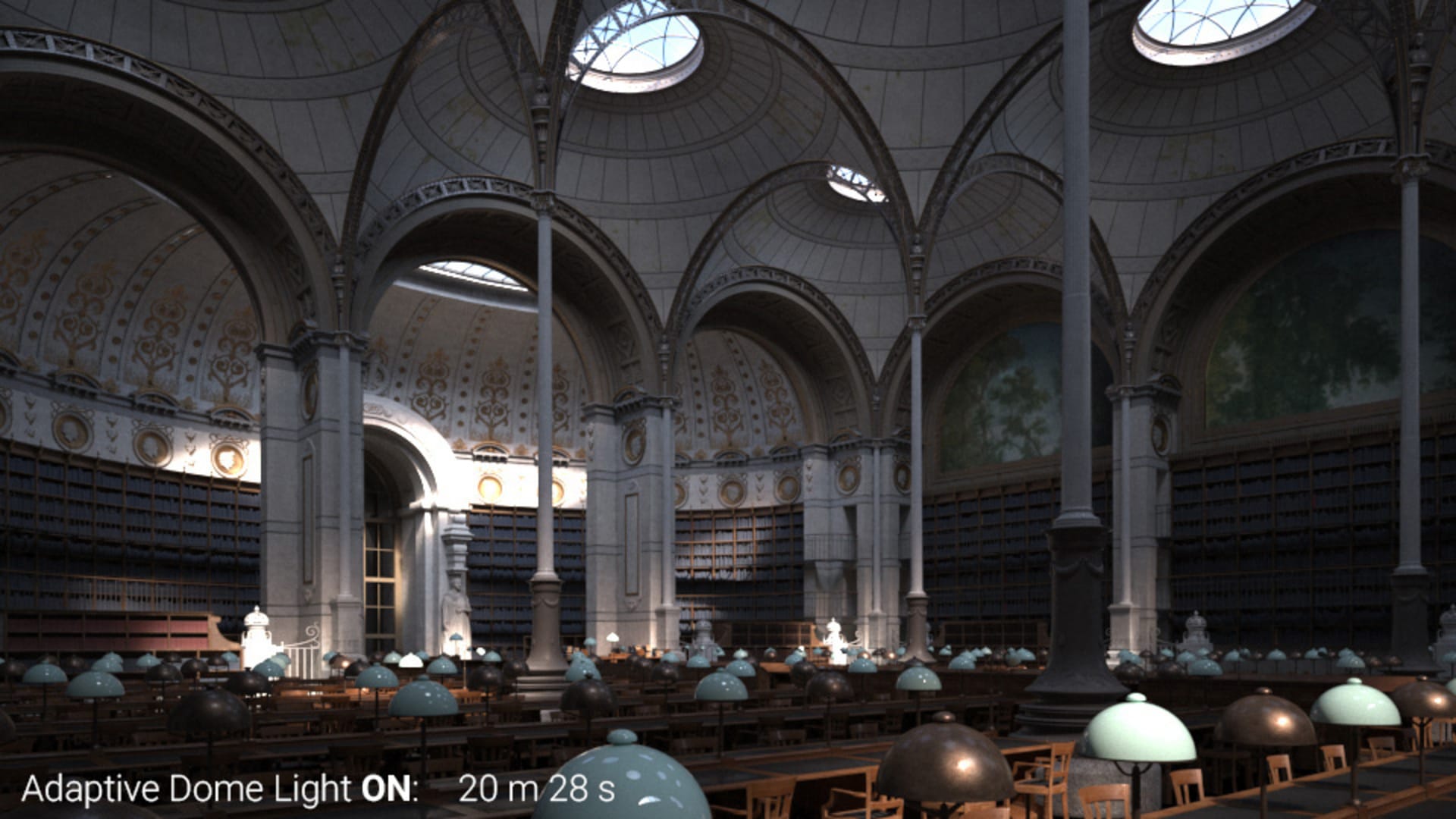
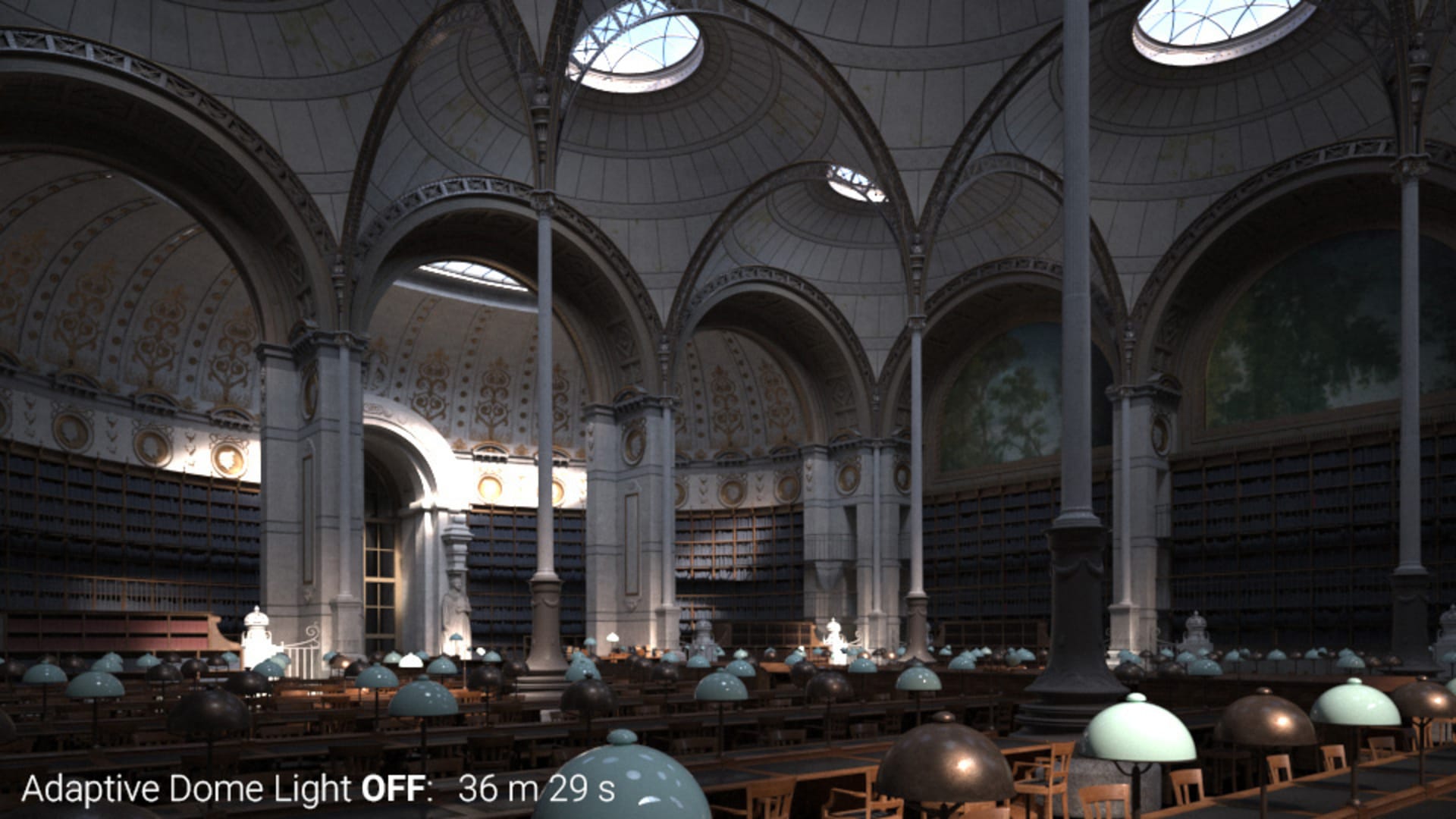
How much faster is the Adaptive Dome Light?
Many factors can affect the overall speed gains that this feature can give you. Our early tests have seen speed increases from 10% up to 700%, depending on factors such as the complexity of the scene, contrast level of the HDRI, etc. Here are a few examples of different types of HDRIs and scene types.
Adaptive Dome Light Benchmarks
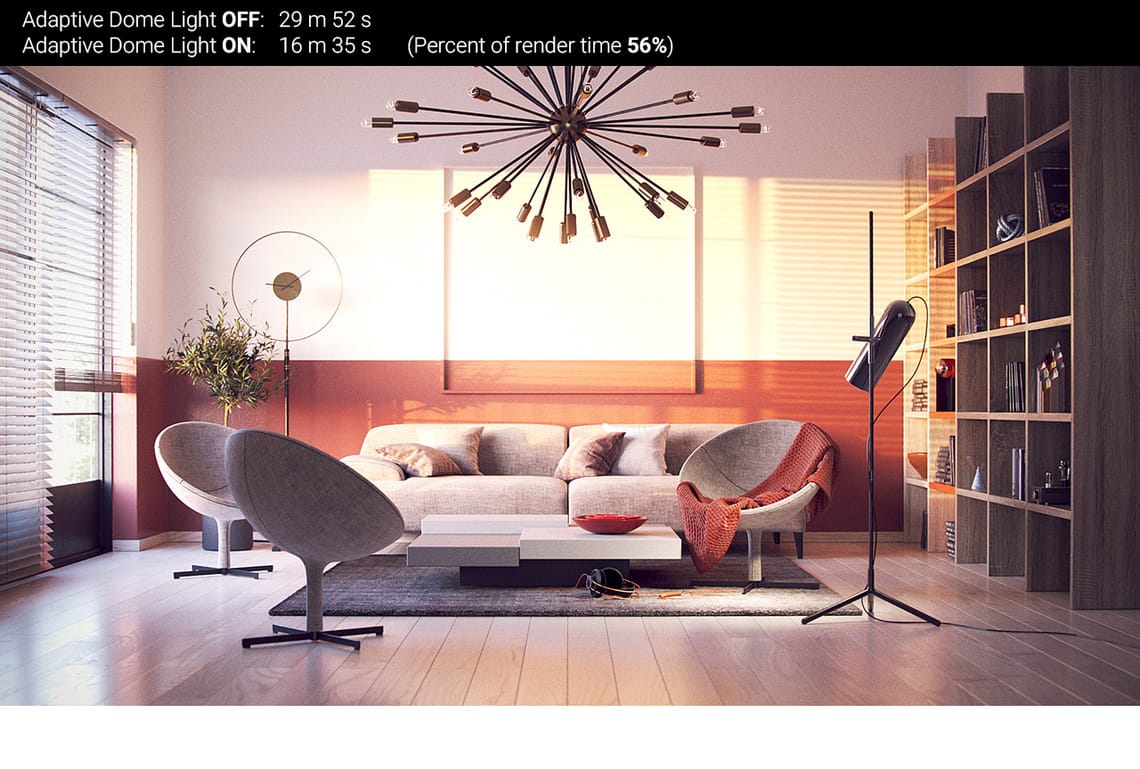
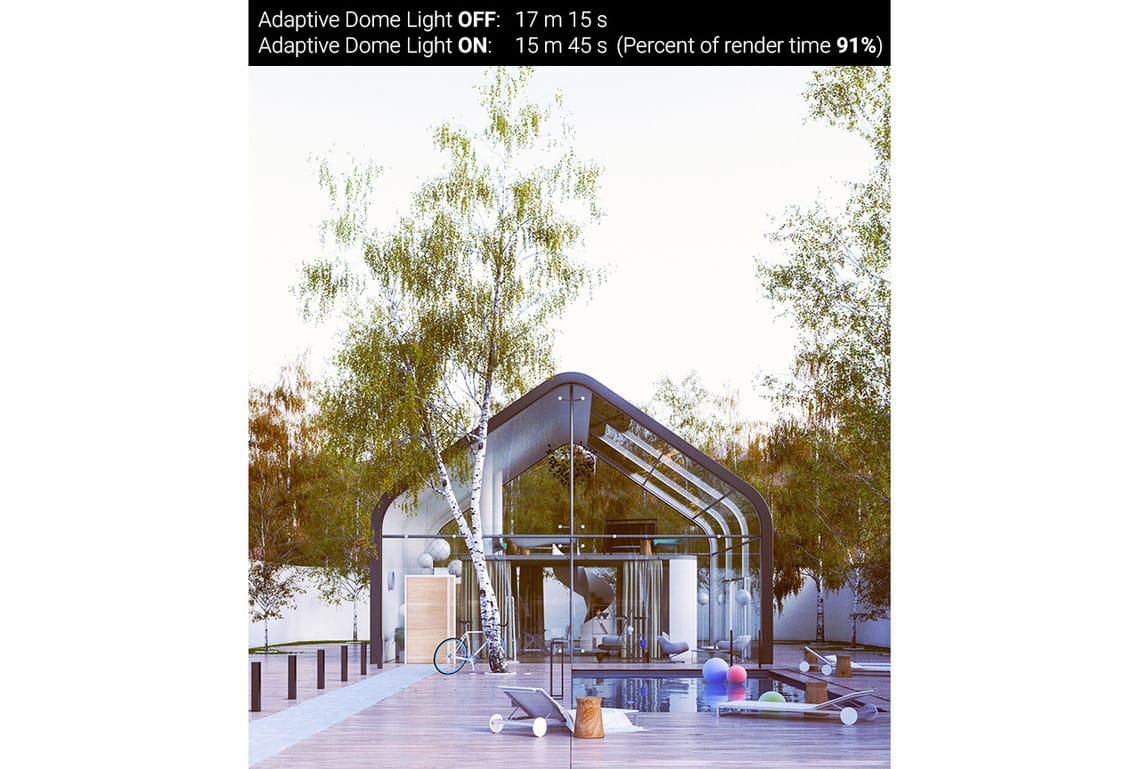
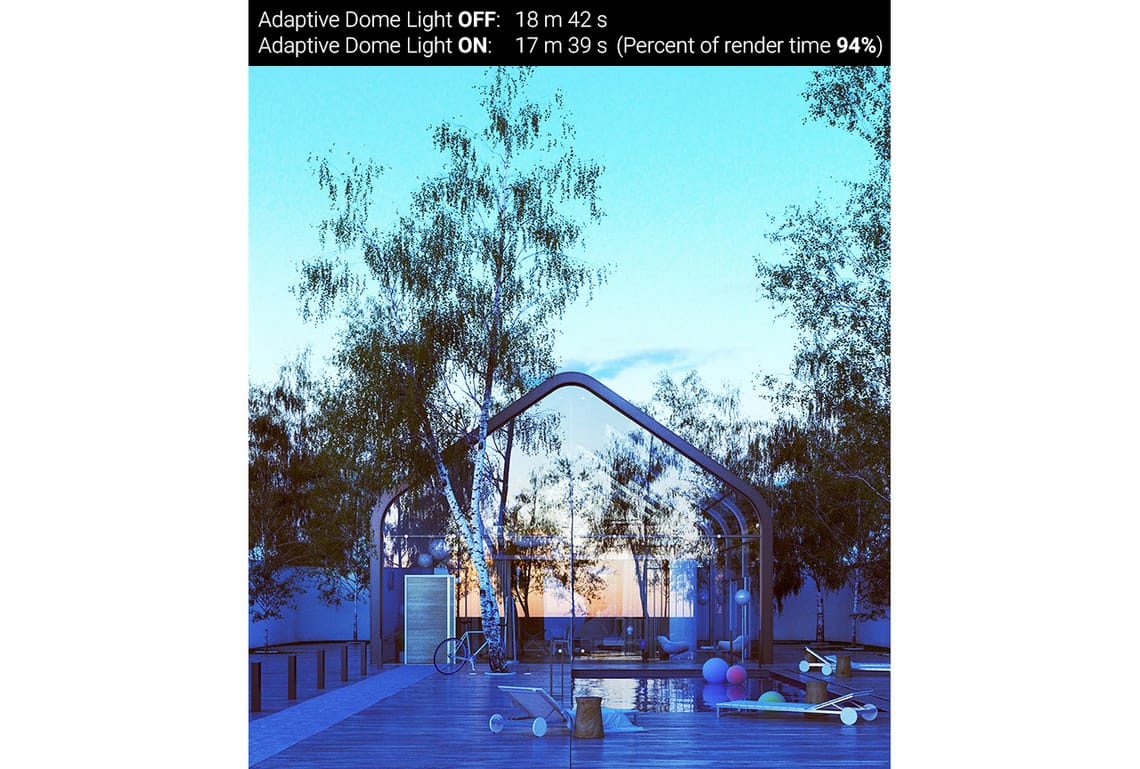
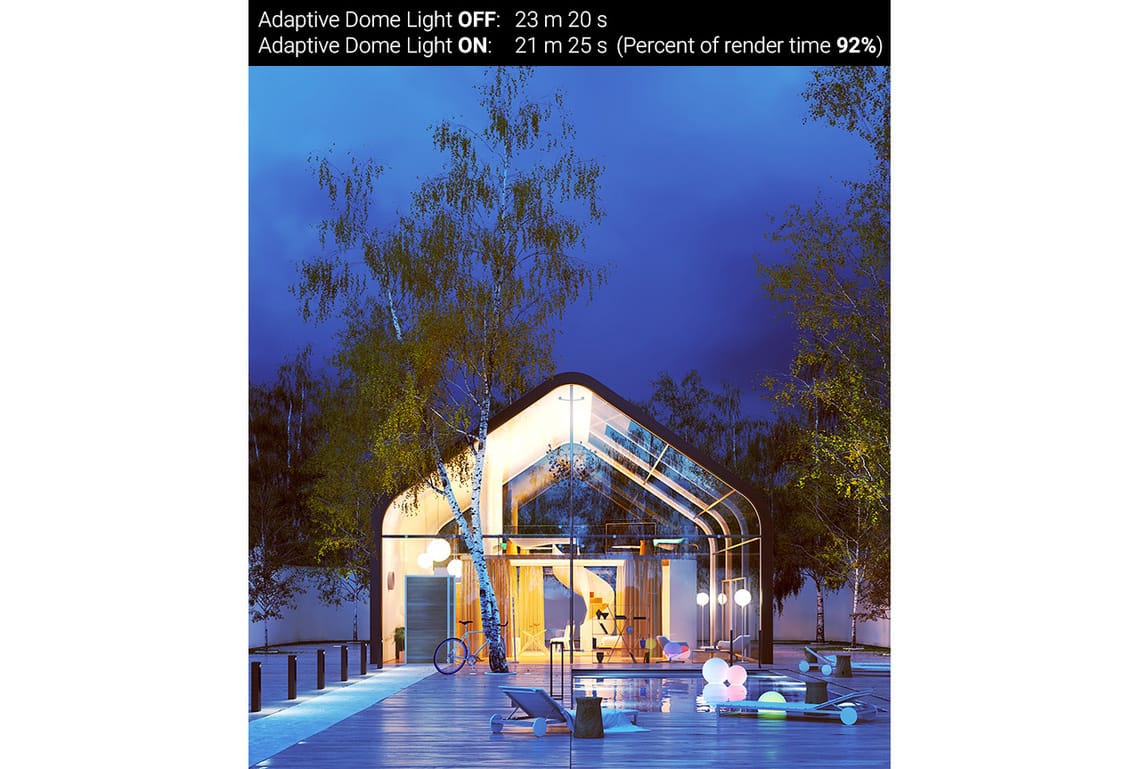
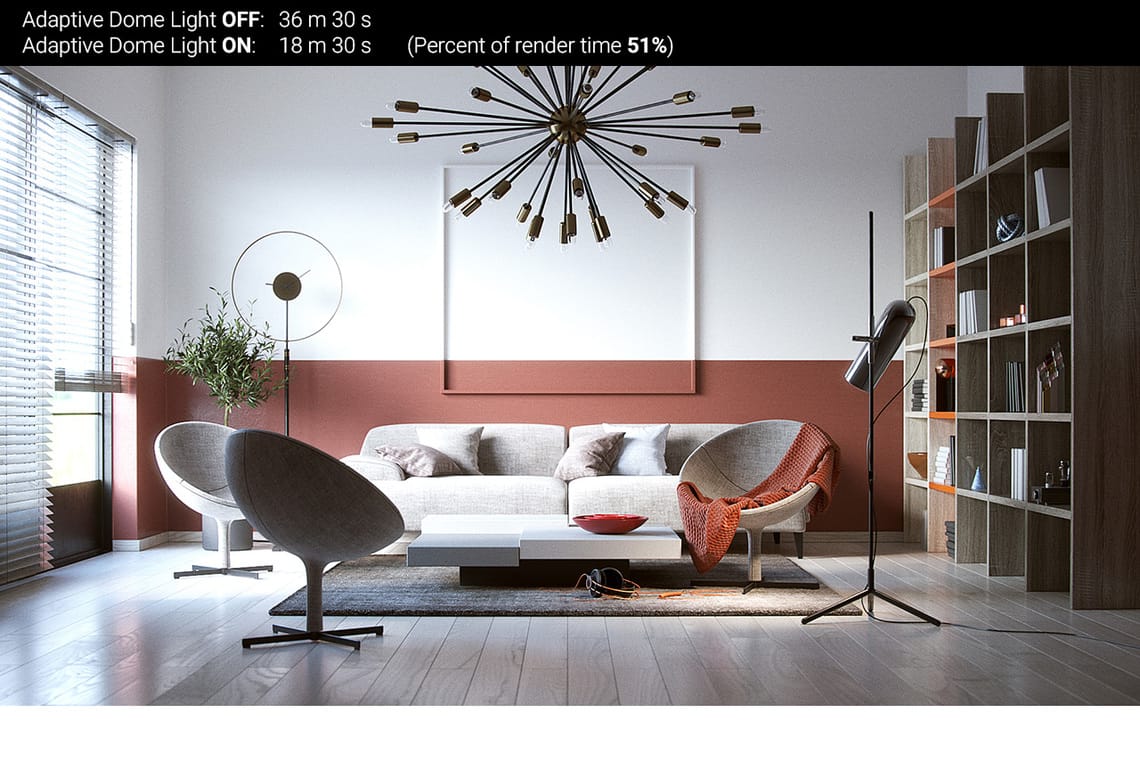
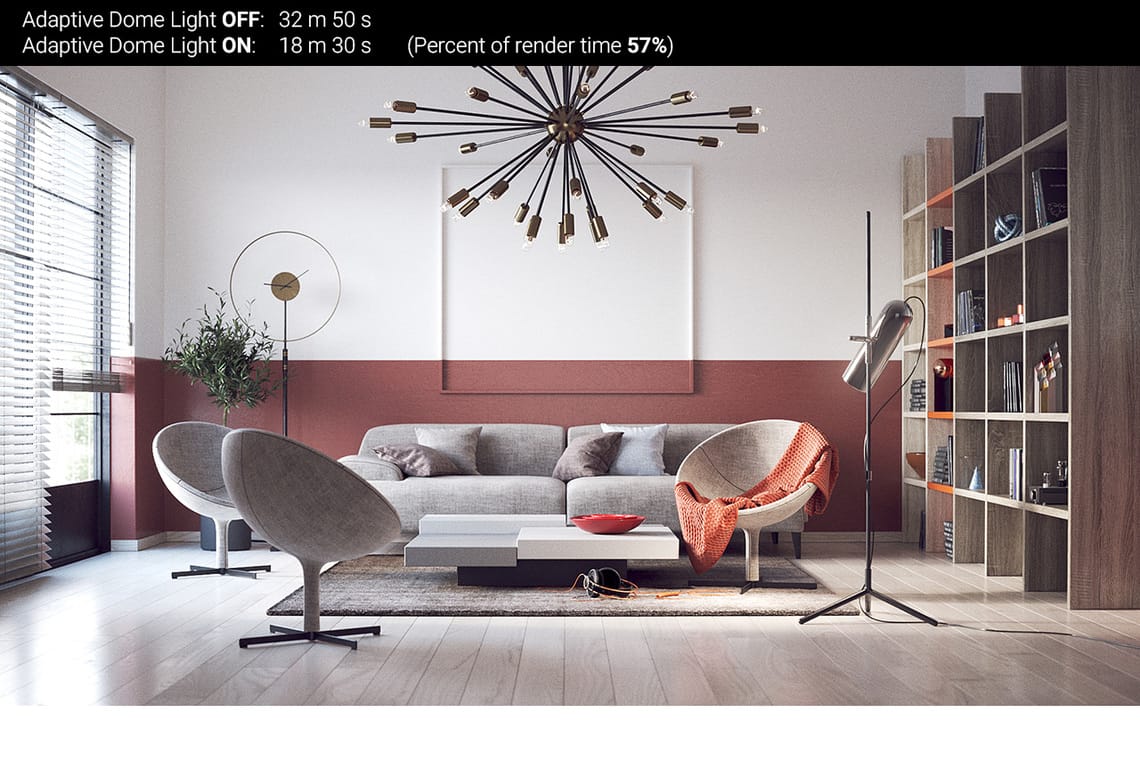
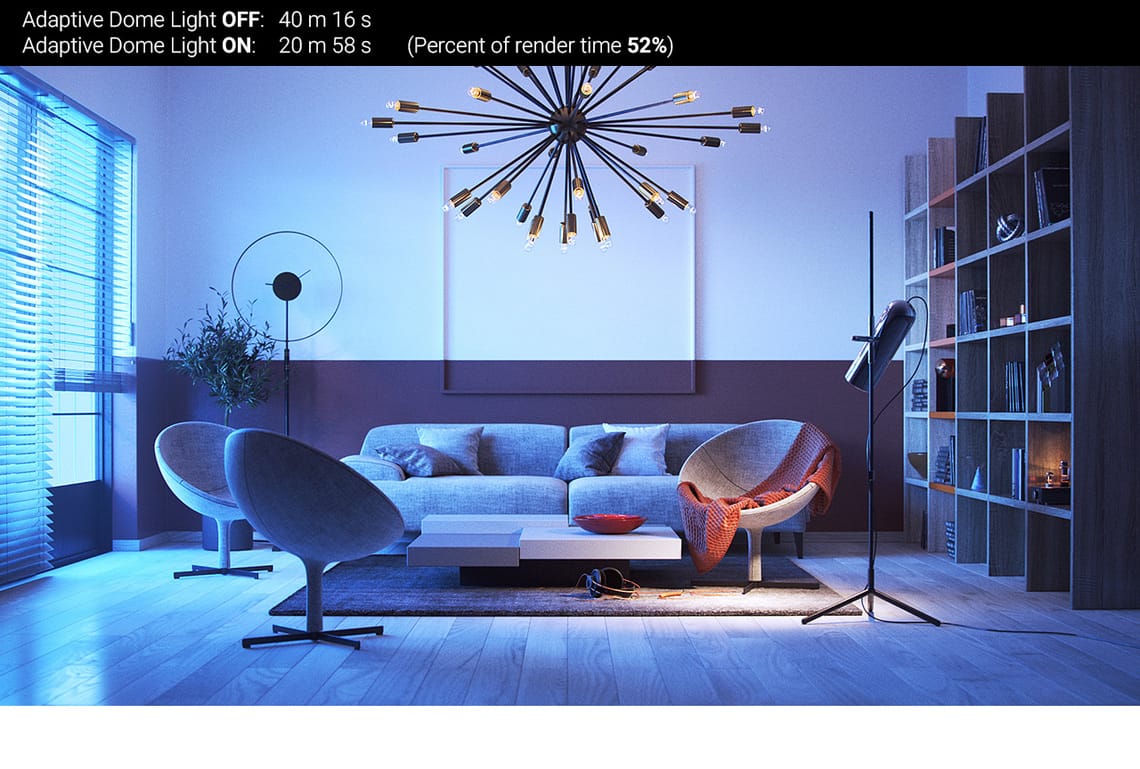
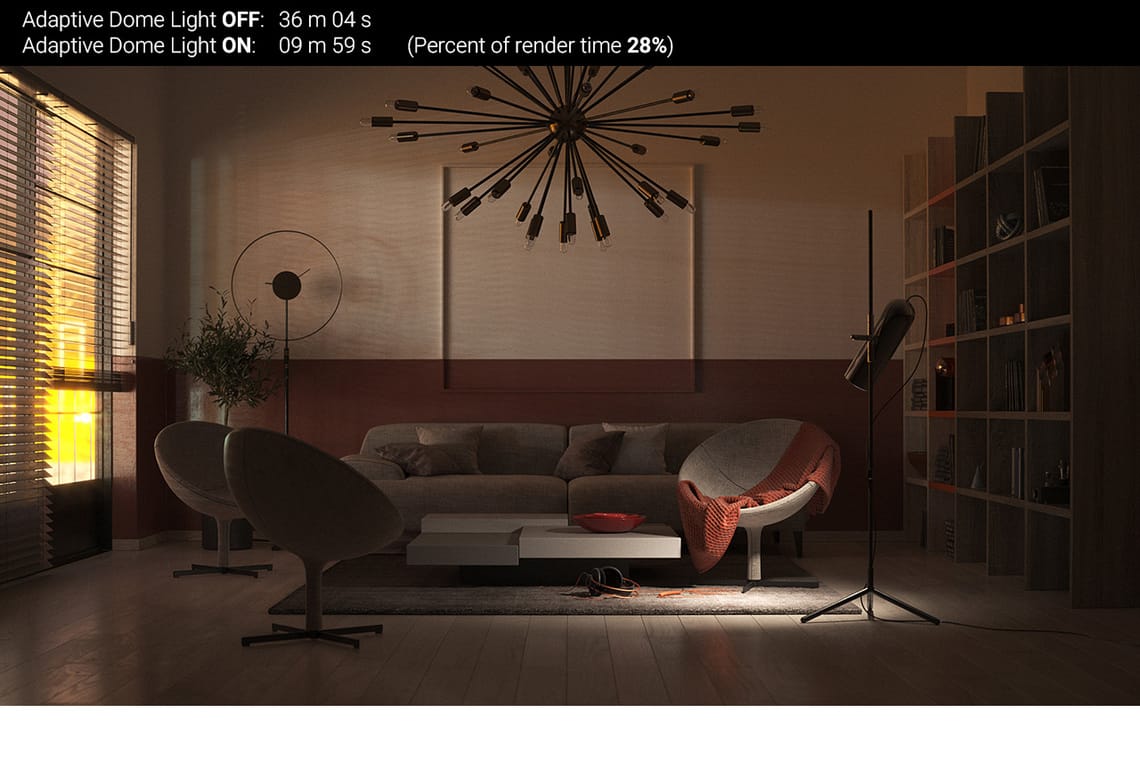
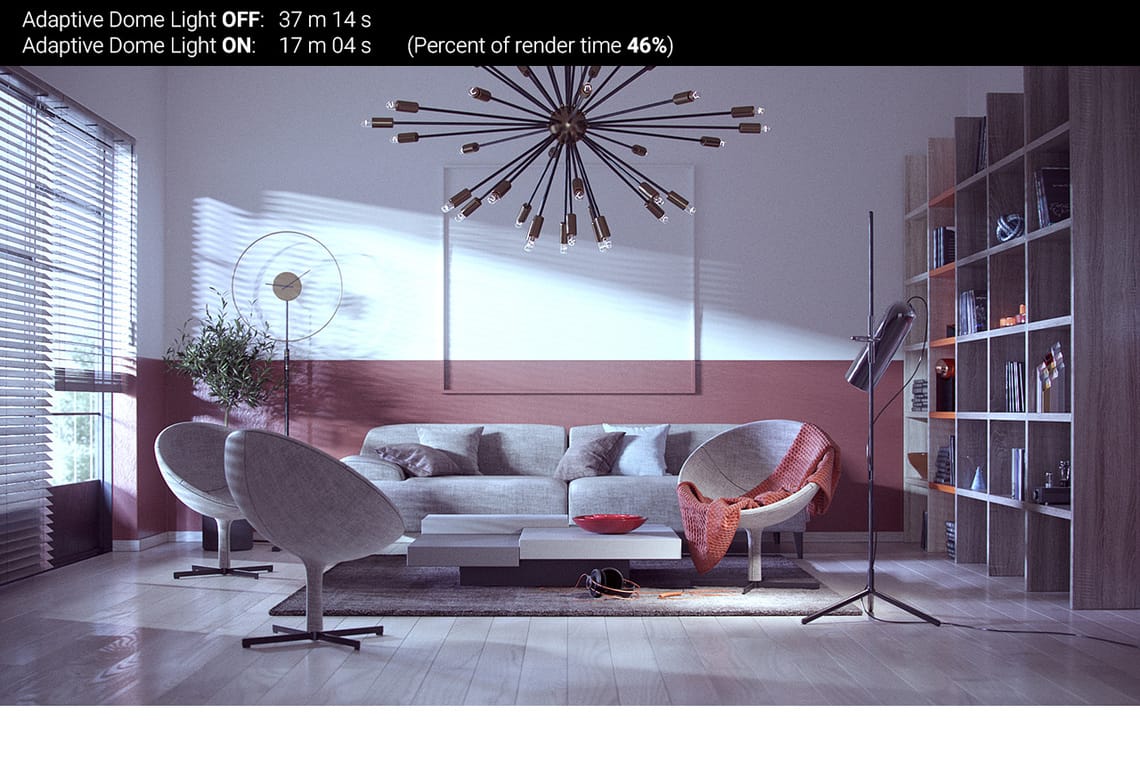
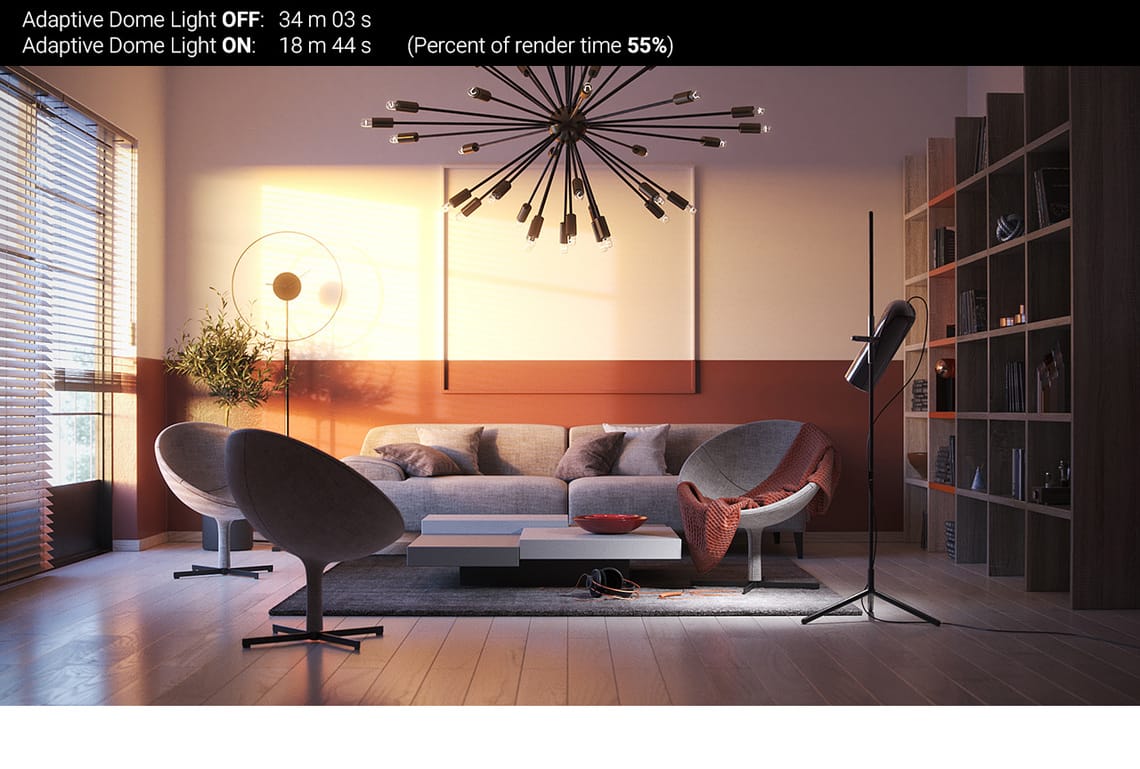


| ADL OFF | ADL ON | Percent of render times |
|
|---|---|---|---|
| Exterior Day | 17 m 15 s | 15 m 45 s | 91% |
| Exterior Night A | 18 m 42 s | 17 m 39 s | 94% |
| Exterior Night B | 23 m 20 s | 21 m 25 s | 92% |
| Interior Day A | 36 m 30 s | 18 m 30 s | 51% |
| Interior Day B | 32 m 50 s | 18 m 49 s | 57% |
| Interior Night A | 40 m 16 s | 20 m 58 s | 52% |
| Interior Night B | 36 m 4 s | 9 m 59 s | 28% |
| Interior Sharp | 37 m 14 s | 17 m 4 s | 46% |
| Interior Sunset A | 34 m 3 s | 18 m 44 s | 55% |
| Interior Sunset B | 29 m 52 s | 16 m 35 s | 56% |
| Library | 36 m 29 s | 20 m 28 s | 56% |
Machine Specs:CPU- Intel(R) Xeon(R) CPU E5-2650 v4 @ 2.20GHz x48(threads) GPU- Quadro M6000 24GB 24576MB RAM- 128 GB
Conclusion
Render times are highly dependent on the number of rays and samples needed to create a clean image. To help you get a cleaner image faster, we’re making V-Ray smarter in the way it analyzes scenes and optimizes ray calculations. The new Adaptive Dome Light brings intelligence to one of the most frequently used lighting methods in CG today.The Adaptive Dome Light is available in V-Ray Next for 3ds Max, Maya, SketchUp and Rhino.Want to see how it'll speed up your renders? Download a V-Ray trial.

